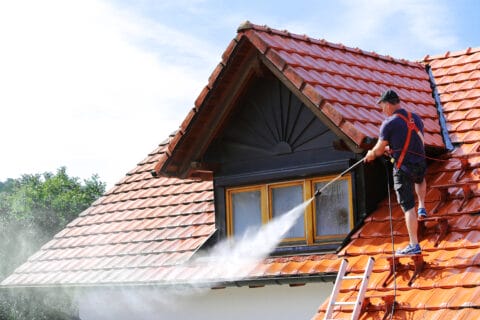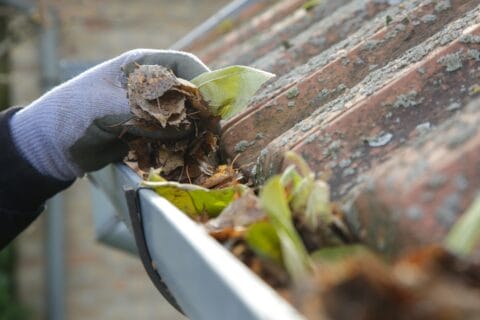Common Gutter Installation Mistakes to Avoid
 Revised by Bruce Hulse
Revised by Bruce Hulse
Properly installed gutters are crucial for protecting your Ontario home from water damage, foundation erosion, and roof deterioration. Unfortunately, both homeowners and some inexperienced installers commonly overlook critical details, leading to ineffective gutter systems and costly repairs. To ensure your home remains protected against Ontario’s demanding weather conditions, it’s essential to understand and avoid frequent gutter installation mistakes. This comprehensive guide covers common errors, their potential consequences, and how to achieve a properly functioning gutter system.
Why Proper Gutter Installation Matters
Gutters perform a vital function: directing rainwater safely away from your home’s foundation, landscaping, and exterior surfaces. Proper installation prevents water damage, basement flooding, roof leaks, and landscape erosion, preserving your home’s structural integrity. Conversely, improperly installed gutters can fail to direct water effectively, leading to expensive repairs and structural deterioration. Awareness of common installation pitfalls allows homeowners to proactively safeguard their property.
Consequences of Poor Gutter Installation
Poor gutter installation can significantly impact your home, resulting in multiple costly and sometimes dangerous problems:
-
Foundation Damage: Water pooling around your foundation erodes soil, weakens structural integrity, and may cause foundation cracks or settling, a particularly common issue after heavy Ontario rainstorms.
-
Roof and Interior Leaks: Water trapped in clogged or poorly sloped gutters often backs up beneath shingles, leading to severe roof damage, leaks, and interior moisture problems.
-
Mold and Mildew: Persistent moisture from poor drainage encourages mold and mildew growth, creating health hazards and reducing indoor air quality.
-
Landscape and Soil Erosion: Overflowing gutters can erode landscaping, damage gardens, and compromise driveway and walkway stability, negatively affecting your property’s value and curb appeal.
Clearly, avoiding common gutter installation mistakes can save Ontario homeowners significant stress, time, and expense.
Frequent Gutter Installation Mistakes and How to Prevent Them
Several common mistakes often compromise gutter systems. By recognizing these issues, you can ensure proper installation and long-term reliability.
1. Incorrect Gutter Placement Relative to the Drip Edge
Mistake:
A common installation error is placing gutters too far forward or misaligning them with the roof’s drip edge. When gutters don’t properly align with the drip edge, water bypasses the gutter channel and runs down behind it. Over time, this leads to fascia rot, leaks into the home, and potential structural damage.
How to Avoid This Mistake:
Ensure gutters are installed directly underneath or slightly behind the roof’s drip edge. If your roof lacks a proper drip edge, consider installing one first. A correctly positioned drip edge guarantees rainwater flows directly into gutters, effectively channeling water away from your home’s exterior.
2. Improper Downspout Placement and Length
Mistake:
Incorrect downspout placement often leads to water pooling at your home’s foundation. Downspouts positioned too close to the house can deposit water right against the foundation, causing erosion, leaks, and structural instability over time.
How to Avoid This Mistake:
Strategically position downspouts to guide water away from your home. Extend downspouts at least 4 feet from the foundation, ideally using extensions or splash blocks to ensure water is directed safely into areas where it can be absorbed or drained effectively. Consider underground drainage pipes or landscaping features such as French drains for enhanced protection, particularly if your property experiences significant runoff.
3. Incorrect Gutter Slope (Pitch)
Mistake:
Gutters installed with insufficient or excessive slope lead to drainage problems. Gutters that are too flat encourage stagnant water, debris buildup, rusting, and eventual overflow. Conversely, gutters pitched too steeply can overflow during heavy rains and fail to direct water efficiently toward downspouts.
How to Avoid This Mistake:
The optimal gutter slope is approximately ¼ inch per 10 feet of gutter length, gently guiding water toward downspouts without risking overflow. Carefully measure and set this slope during installation, ensuring gutters function effectively even during heavy Ontario rains.
4. Insufficient Gutter Hanger Spacing
Mistake:
Many installers mistakenly space gutter hangers too far apart. Excessive spacing results in sagging gutters, particularly under the weight of heavy rain, snow, or ice accumulation, all common in Ontario’s harsh winter climate. Sagging gutters prevent proper drainage and eventually lead to water damage.
How to Avoid This Mistake:
Install gutter hangers approximately every 24 inches (2 feet), or even closer—16 to 18 inches apart—in regions experiencing heavy snowfall or ice buildup. Reinforced brackets can further enhance stability, ensuring your gutters maintain their proper shape and function even under severe weather conditions.
5. Choosing the Wrong Gutter Size
Mistake:
Homeowners sometimes select gutters that are inadequately sized for their roof area or local weather conditions. Smaller gutters can quickly become overwhelmed during heavy rains or snowmelt, causing frequent overflow and damage.
How to Avoid This Mistake:
The standard gutter size for most Ontario homes is typically 5 inches. However, larger roofs, steep pitches, or homes in high-precipitation areas may require 6-inch gutters to handle greater water volumes effectively. Evaluating your roof’s surface area and considering local climate conditions helps select appropriately sized gutters, significantly reducing overflow risks.
Selecting Appropriate Gutter Materials for Ontario Homes
Choosing the right gutter materials also significantly impacts their performance and durability. Materials suited to Ontario’s climate must withstand temperature extremes, snowfall, and precipitation without quickly deteriorating.
Why Aluminum Gutters Are a Popular Choice
Aluminum is the top choice for Ontario homeowners due to its numerous practical advantages:
-
Lightweight and Easy Installation: Aluminum gutters are lighter and easier to handle than alternatives like steel or copper, simplifying installation and reducing labour costs.
-
Rust and Corrosion Resistance: Aluminum naturally resists rust and corrosion, essential for enduring Ontario’s wet and snowy climate without significant maintenance.
-
Cost-Effective Durability: Aluminum gutters are durable yet cost-effective, offering an ideal balance between performance and affordability.
-
Customizable Appearance: Available in various colours, aluminum gutters can easily complement your home’s exterior style.
For best results, choose aluminum gutters with a thickness (gauge) of at least .032 inches, balancing strength, durability, and ease of installation.
The Advantages of Seamless Gutters
While traditional sectional gutters have multiple joints prone to leaks, seamless gutters are custom-fit to your home and minimize potential leak points. Although they carry a higher initial cost, seamless gutters require less maintenance, experience fewer leaks, and offer superior longevity—making them a worthwhile long-term investment in protecting your Ontario home.
Essential Gutter Maintenance Tips for Long-Term Reliability
Even perfectly installed gutters require periodic care. Regular gutter maintenance ensures your system remains fully functional, safeguarding your home against water damage.
Regular Gutter Cleaning
Clean gutters at least twice a year, typically during fall after leaves fall, and again in spring. Regular cleaning prevents debris from causing blockages, reducing overflow risks and potential damage. Homes surrounded by trees may require more frequent cleanings to maintain proper drainage.
Installing Gutter Guards for Added Protection
Installing gutter guards effectively minimizes debris buildup, significantly reducing gutter maintenance demands. Guards help maintain consistent water flow and prevent clogs—ideal for Ontario homeowners with limited time or those seeking maintenance convenience.
Routine Inspections to Identify Issues Early
Inspect gutters after major weather events such as heavy rains, snowstorms, or significant wind events. Regular visual checks for cracks, leaks, loose sections, or sagging can identify problems early, preventing extensive damage and costly repairs.
When to Hire a Professional Gutter Installer
While some homeowners prefer DIY installation, professional gutter installation often provides superior results:
-
Expertise in Proper Slope and Alignment: Professionals precisely set gutter pitch and placement, ensuring optimal water drainage.
-
Quality Materials and Precision Cuts: Professionals use high-quality materials, precisely measured and custom-fit to your home’s specifications.
-
Warranty and Assurance: Professional installations often include warranties covering materials and workmanship, providing homeowners peace of mind and protection for their investment.
Hiring a professional is particularly advisable if your home presents complex architectural features, steep roofs, or extensive gutter systems.
Conclusion: Protect Your Home by Avoiding Common Mistakes
Proper gutter installation and maintenance remain critical for protecting your Ontario home against water damage, foundational erosion, and costly repairs. By avoiding common installation errors—such as incorrect placement, improper slope, inadequate hanger spacing, incorrect downspout positioning, and wrong gutter sizing—you significantly enhance your gutter system’s effectiveness and durability.
Key Takeaways for Ontario Homeowners:
-
Install gutters directly beneath or behind the drip edge.
-
Maintain proper gutter slope (¼ inch per 10 feet) toward downspouts.
-
Ensure downspouts discharge water at least 4 feet away from your home.
-
Use properly sized gutters based on roof area and local rainfall conditions.
-
Space hangers no more than 24 inches apart (closer in snowy regions).
-
Consider seamless aluminum gutters for maximum reliability and longevity.
By carefully addressing these key factors, Ontario homeowners can confidently invest in reliable, long-lasting gutter systems, safeguarding their homes against water damage and enhancing long-term property value.


